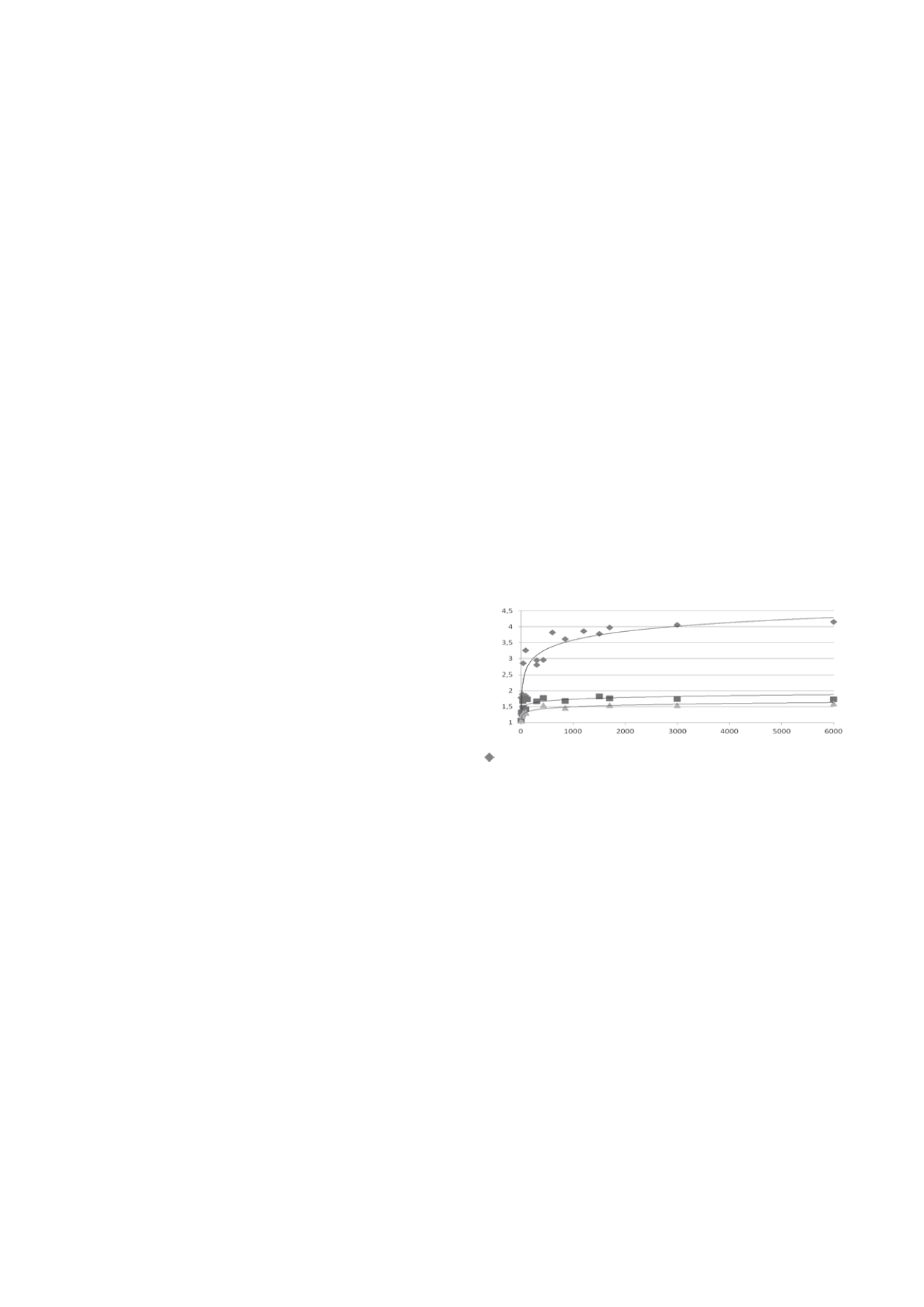
825
Interaction between structures and compressible subsoils considered in light of soil
mechanics and structural mechanics
Etude de l’interaction sol- structures à la lumière de la mécanique des sols et de la mécanique des
stuctures
Ulitsky V.M.
State Transport University, St. Petersburg, Russia
Shashkin A.G., Shashkin K.G., Vasenin V.A., Lisyuk M.B.
Georeconstruction Engineering Co, St. Petersburg, Russia
Dashko R.E.
State Mining Institute, St. Petersburg, Russia
ABSTRACT: Authors developed ‘
FEM Models
’ software, which allows solving soil-structure interaction problems. To speed up
computation time this software utilizes a new approach, which is to solve a non-linear system using a conjugate gradient method
skipping intermediate solution of linear systems.
The paper presents a study of the main soil-structure calculations effects and contains a basic description of the soil-structure
calculation algorithm. The visco-plastic soil model and its agreement with in situ measurement results are also described in the paper.
RÉSUMÉ : Les auteurs ont développé un logiciel aux éléments finis, qui permet de résoudre des problèmes d’interactions sol-
structure. Pour l’accélération des temps de calcul, une nouvelle approche a été utilisée: qui consiste a résoudre un système non linéaire
par la méthode des gradients conjugués, qui ne nécessite pas la solution intermédiaire des systèmes linéaires.
Cette communication présente une étude des principaux effets des calculs sol-structure, et une description de l’algorithme de calcul
sol-structure . Le modèle visco-plastique pour le sol et la bonne concordance avec les résultats des mesures sont également détaillés. .
KEYWORDS: soil-structure inrteraction, soil non-linear models, numerical modeling
1 INTRODUCTION
Necessity soil-structure interaction calculations (SSI) is becoming
more and more obvious to a majority of both geotechnical and
superstructure designers. SSI produces one major effect that can
be expressed by a simple formula “subsoil behaviour considered
= superstructure loads changed”. The effect has been certainly
known for a long time. Indeed, a theoretical epure of contact
stresses under an absolutely rigid plate is a parabola with
infinite values under plate edges. A real epure is of a
characteristic trough shape. Stresses at the plate foot are a
reflection of this epure. Correspondingly, stresses inside the
plate itself will be equally non-uniform. However, the essence
of the matter is that loads distribution in this or that structure
depends on a whole range of factors, including, but not limited
to, structural layout, spatial rigidity, deformation characteristics
of structural materials, and subsoil yield properties.
The degree of difference between an SSI-based calculation
and that for traditional non-yielding supports can be expressed
as factor K
ssi
= σ
ssi
/σ
tr
, where σ
ssi
– stresses in a certain point
based on SSI, σ
tr
– stresses in the same point based on
traditional separate calculation. Based on our sample numerical
analyses that factor may reach the value of 4 for typical building
layouts (Fig. 1), which establishes practical necessity for SSI
design.
Factor K
SSI
tends towards 1 with subsoil rigidity increase,
i.e. on condition that subsoil approaches a non-compressible
state. With decrease of subsoil rigidity the factor increases to
certain limits following which it no longer displays any
significant change (and, of course, the greater the subsoil yield,
the greater the settlement). The highest stress concentration is
observed in the lower edge of transverse walls in layout
а
,
because in this layout stresses cannot be transferred to
longitudinal exterior walls.
The dependency shown in Fig. 1 cannot certainly be used
directly in practical design applications in view of the fact that it
was obtained for some generalized and simplified structural
building layouts. Practical SSI effects are considerably more
difficult and versatile.
E
str
/E
oed
K
ssi
Transverse walls with spacing 6 m
■
Cellular structure
▲
Longitudinal walls
Fig. 1. Dependency of K
SSI
value on relation of superstructure and
subsoil stiffnesses E
str
/E
oed
for various building layout types
2 MAJOR PROBLEMS OF PRACTICAL SSI
APPLICATION
So, expediency of SSI application in practical analyses
seemingly being beyond doubt, one should simply go ahead
using SSI-based computations in one’s routine design activities.
However, when practically attempting analyses a designer faces
several problems which we attempt to classify below.
2.1
Technical problems
Technical complicacy of SSI analyses. SSI analyses pose a
challenge even for contemporary, rapidly advancing, computer
technologies.
Commercial dearth of codes capable of SSI calculations
catering to the interests of both superstructure and geotechnical
engineers.
Closed-in character of commercially available codes: they
are essentially “black boxes”, never revealing the ways in which
the models of materials and soils actually work.
Unavailability of an instrument with which to study
behaviour of various models of soils and materials.


